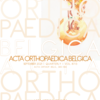Platelet-rich plasma vs platelet-rich plasma plus hyaluronic acid for haemophilic knee arthropathy treatment
Knee arthropathy; haemophilia; platelet-rich plasma; hyaluronic acid
Published online: Feb 16 2022
Abstract
Repeated joint bleeding leads to chronic synovitis, cartilage damage and bone alterations which result in haemophilic arthropathy and are associated with pain, functional impairment and poor quality of life. There are evidence that Hyaluronic Acid (HA) and Platelet-rich Plasma (PRP) have different mechanisms of action in the treatment of arthropathy for this reason we decided to use both components. The aim of this study is to compare, the efficacy, safety and duration of a single intra-articular injection of PRP against PRP+HA for pain, bleeding episodes and joint health, in the same patient with bilateral hemophilic knee arthropathy. Twenty-one men patients (42 knee joints) were treated with intra- articular injections of PRP or PRP+HA. All of them were haemophilia type A severe. The mean age was 36.6 years (21-72). All patients were evaluated for: Haemophilia Joint Health Score (HJHS), pain (VAS), the number of bleeding episodes (BE) in the last 30 days, before treatment, at three and six months after treatment. Statistically significant improvement were shown for both knee joints at three and six months after treatment for VAS and BE (P < 0.00001). The HJHS score did not significantly improve for either knee in the 6-month period after injection. A single PRP or PRP+HA injection is safe and effective in treating haemophilic arthropathy of the knee for up to 6 months follow-up, reducing pain, bleeding episodes and delaying total knee arthroplasty.
